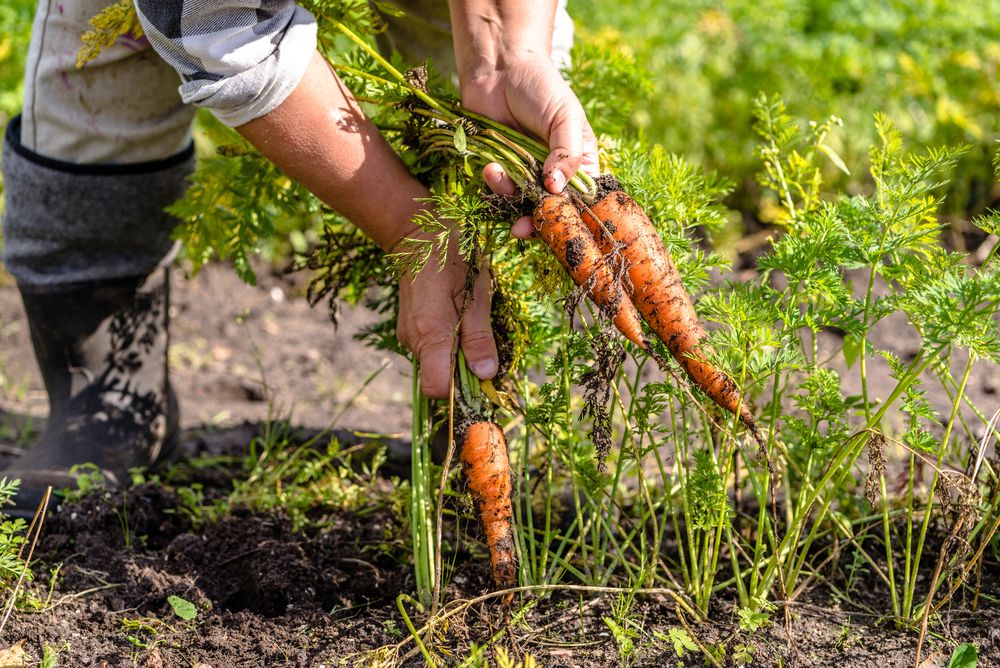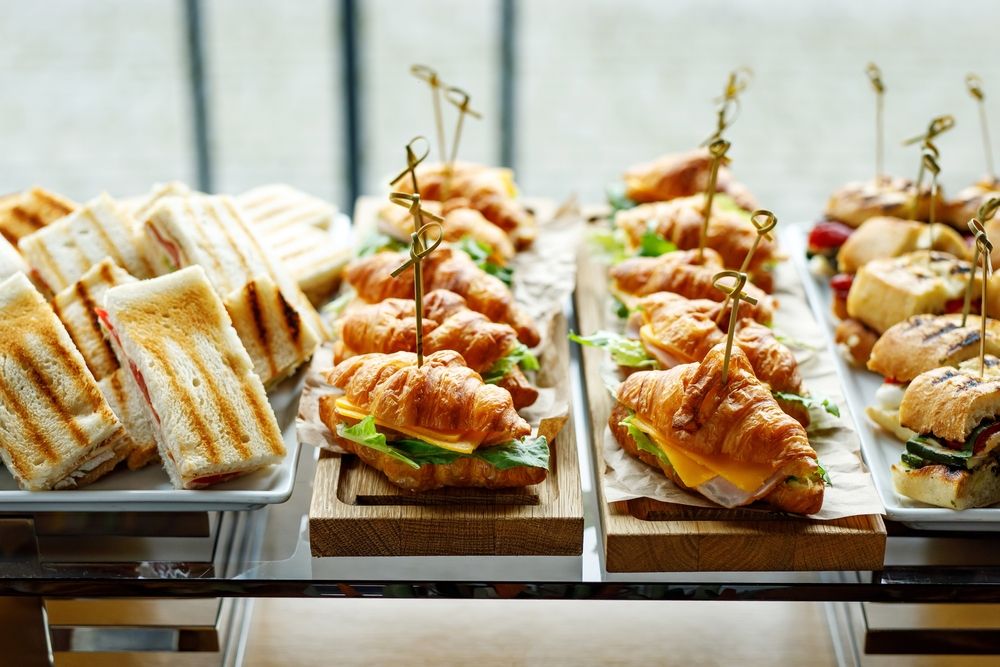Maximising Success with Cafés and Food Retail in Garden Centres - Speaker Spotlight: Glee 2024
)
 |
Andrew is an Associate Director within Pleydell Smithyman Limited, and he specialises in garden centre and farm shop business strategy and development. He provides site development, commercial and operational support to clients throughout the UK. Andrew has over 30 years management experience in retail and leisure sectors, and previously sat on the Garden Centre Association Board. Andrew now sits on the Farm Retail Association Council in an advisory role, whilst also being the visiting judge for the Farm Shop Association retail and catering competitions for the past 4 years |
Garden centres have long been destinations for more than just plants and gardening tools. Increasingly, they are places where customers linger, meet friends and enjoy a meal or a coffee.
The inclusion of cafes, restaurants and food retail in garden centres is now considered essential, not only to enhance the customer experience but also to boost business revenue. However, simply adding a café or food section doesn’t guarantee success. To truly maximise the potential, careful planning, an understanding of customer expectations and a commitment to quality are essential.
At Glee 2024, Andrew Burton, Associate Director of Pleydell Smithyman, highlighted the importance of being bespoke, creating a reason for customers to visit you, benchmarking yourself and being honest with yourself.
If you missed this inspiring discussion, here’s an overview:
Why Food Retail and Catering Matter in Garden Centres
Statistics show that food-related sales can make up to 35% of a garden centre's turnover, underscoring the power of food as a profit driver. A recent update from the Horticultural Trades Association highlighted that cafés, restaurants, catering and food retail within garden centres have increased by 15% in turnover year-to-date compared to 2023, with even more substantial growth in some regions. This demand signifies not just a trend but a clear opportunity to diversify offerings, increase customer loyalty and drive regular visits.
In recent years, garden centres have experienced a substantial shift in the role of food retail and catering within their operations, reflecting changing consumer interests and the evolving landscape of garden retail.
In 2016, food retail accounted for just 2.6% of sales in garden centres, however, recent trends highlight a significant increase in food retail sales, which have now risen to 8-10% of turnover for many garden centres, marking an impressive growth of 5.5% in this category alone.
This increase in food retail reflects a growing demand for speciality foods, fresh produce and other grocery items at garden centres, transforming them into multipurpose shopping destinations.
As for catering, the sector faced a temporary decline in recent years, dipping from the original 20% down to about 11-12% of turnover. However, catering has shown strong resilience and a notable rebound, now climbing back up to contribute between 23% and 25% of turnover for many centres.
These shifts show the importance of food retail and catering services in enhancing customer experiences at garden centres. As more visitors look for a complete outing experience that combines shopping with dining, garden centres are increasingly integrating food retail and catering services into their business models, making them an essential part of their appeal and profitability.

Key Ingredients of Success: The Four P’s
To succeed in food retail and café operations, consider the four P’s: People, Product, Place and Process. Each is essential in maximising customer satisfaction, brand identity, and profit margins.
1. People: Your team is foundational to your success. Skilled, passionate staff can make a substantial difference. Consider hiring individuals with food industry experience to bring expertise and a love for food to your café or food retail area.
2. Product: Offering a distinct product range is essential. Customers are increasingly looking for high-quality, local, and unique items. In addition to the staple cakes and coffees, think about unique offerings that align with your brand. For example, a garden centre with an upscale concept can attract a different demographic and add a layer of sophistication to the brand.
3. Place: Location is a crucial factor for both cafés and food retail spaces. Position your café to capture footfall strategically, perhaps halfway through the customer’s journey so they can relax and refresh, and then return to shopping. For food retail, a location close to the exit can enhance convenience, especially if customers are picking up fresh or frozen items. (Keep reading to dive into this deeper!)
4. Process: Efficient processes are vital. Many garden centres have moved from counter to table service, improving the customer experience and increasing the average transaction value. Think about implementing processes that will optimise customer flow, keep wait times low, and maximise table turnover without sacrificing service quality.
Data-Driven Insights and Benchmarking
Understanding how you measure up against industry standards is key. Consider benchmark data, such as average sales per square metre, which can indicate the performance of your café or food retail space. For instance, a high-performing food retail area in a garden centre might yield £3,300 per square metre, while a premium butcher’s setup might achieve up to £6,000 per square metre. Use these benchmarks to set realistic goals and drive profitability.
Also, look at turnover by seating in cafés. Many successful establishments average £6,500 per seat, while high-performing farm shops can see up to £13,000 per seat. Evaluating your own data against these benchmarks can help you identify opportunities to refine your offerings, optimise seating arrangements, and enhance your customer experience.

Considerations for Garden Retailers
A successful garden centre café or food retail area recognises the varying needs of its customers. Consider providing different types of spaces and services, such as a full-service restaurant, a coffee bar, and a grab-and-go section. Not every customer is looking for a full meal, and by offering diverse dining options, you capture a wider audience and alleviate pressure on any single area.
Honest Reflection and Continuous Improvement
Success requires an honest assessment of your current offerings and processes. Are your facilities up to standard? Do your team members deliver the level of service your customers expect? Regularly benchmark your business against industry leaders, seeking areas where you can improve or innovate.
As an owner or manager, keeping a close eye on trends and data is crucial, but so is the willingness to adapt. Garden centres that have grown from “good” to “great” are those that continually reflect on their processes, assess customer feedback, and stay true to their brand identity.
Embrace Local and Seasonal Trends
A defining feature of successful farm shops is their focus on locally sourced, seasonal produce. As customers place value on locally made and sourced products, partnering with nearby farms, dairies, and bakeries offers a distinct advantage. By sourcing products from local suppliers, farm shops can ensure fresh, high-quality items that not only bolster the local economy but also strengthen their reputation as providers of authentic, quality goods.
Incorporating seasonal events into your calendar—such as Easter, Christmas, and school holiday gatherings—can further boost engagement, drawing larger crowds and café sales. These events provide an ideal opportunity to highlight seasonal specialties, create unique experiences, and foster a strong connection with the community.
Location. Location. Location.
As mentioned, the position of an eatery in a garden centre is crucial so it’s important to establish a strategy. When customers take a break to dine partway through their visit, they’re naturally drawn to explore more of the retail space afterward, which increases browsing time and the likelihood of additional purchases—especially if the retail layout guides them through key areas. Strategic placement here is essential, such as early or partway through. Situating the café too far from the main flow, such as at the back of an isolated plant area, can discourage foot traffic and complicate logistics like deliveries and waste management.
For garden centres with farm shops, the most successful layouts position these near the checkout. This location is ideal for items like frozen or delicate foods, as customers are likely to head home soon after purchasing perishables. Easy access to the farm shop also makes it convenient for customers who are only interested in food items, without requiring them to navigate the entire store.
In the end, the right placement is fundamental for creating a smooth, enjoyable shopping experience that integrates dining with retail in a seamless, customer-friendly flow.
Year-Round Draw
Adding a café or food retail space can transform a garden centre into a year-round destination that drives customers in all year around, helping control seasonal trade that is often seen in plant based garden centres
Special promotions like afternoon tea deals, lunch discounts, or “meet the producer” events create new reasons for customers to visit during quieter times, especially on weekdays and during off-peak seasons. With food as an added attraction, garden retailers can keep foot traffic steady across all seasons, building customer loyalty and enhancing the overall shopping experience.
Integrating cafés and food retail into your garden centre is more than just a revenue booster—it can transform the customer experience, deepen brand loyalty, and turn occasional visitors into regulars. By focusing on high-quality, unique products, creating an inviting atmosphere, and optimising your processes, you can position your garden centre for long-term success. The potential is vast, and with the right approach, food and cafés can become an invaluable part of your garden centre’s offering.
Whether you’re expanding your café or upgrading your food retail space, take time to review these fundamentals. Aim not just to meet industry standards, but to set your garden centre apart with an experience that keeps customers coming back.
|
|
